




An Introduction to Cash Crops
Agriculture is the study or practice of farming, which includes soil cultivation for crop growth and animal rearing for food, wool, and other goods. Crops grown to feed a country's population are known as food crops. Tobacco, sugar, and cotton are examples of cash crops that are grown in huge quantities in order to be sold for a profit. A crop that is farmed for the purpose of making a profit is known as a cash crop. Cash crops are farmed crops that are grown with the intention of selling them in the market or exporting them for benefit.
What are Cash Crops?
The crop provides cash in the market. These crops are most useful and are grown for nutrients in a country and the world. These crops are used in industries in high demand resulting in an increase in the rate of the crops. Cash crops have some useful nutrients and uses that are good for humankind and animals. The crop is described as large-scale cultivation of the same type of plant. Crops include cereal grains, legumes, oil seeds, vegetables, and fruits. Raw minerals and agricultural products are exported to other countries as goods.
Cash crops help in the improvement of the economy of the country. Developing countries often use this method to increase their economies. The cash crops are exported to other countries. These crops are used in industries and have a vast range of benefits. If there is high demand for that crop, then it increases the price and affects the economy of the country that grows and exports it. Cash crops are not grown only for family and personal needs; they are grown in large quantities so that other countries can consume them.
Cash crops have already been shipped all over the globe as agribusiness has grown more globalised. People in the United States are increasingly eating fruits produced as far afield as South America or even Asia. Distinct continents and ethnicities have different cash crops on which they concentrate their efforts.
Cash Crops Examples
Cash crops can be food and non-food. Grains, oilseeds, tea, chocolate, sugar cane, fruits, vegetables, peanuts, wool, and tobacco are examples of the type’s food and non-food commercial crops. Tobacco, coffee, rice, tea, wheat, cotton, indigo, soybeans, and maize are cash crops. All these crops are cultivated in large quantities and exported to other countries that have less yield.
The wheat crop is used for food and is mostly exported. Soybeans are an oil-yielding crop and are used for the production of oil. Vegetable oil is used in various ways. Cotton has both values in the fabric and textile industries and for oil seeds.
The cash crops are used to feed the dairy animals and other farmed livestock. Their increasing demand increases their value and money. The high-yielding crops are used as cash crops. Sugarcane and sugar beet are used for the production of sugar and are grown in large quantities.
Cash Crops Images with Names
Cotton (Gossypium)
China is the world's greatest cotton producer, followed by India and the United States. Gujarat is India's leading producer of cotton. Cotton is a type of Kharif crop. Cotton is a short tree or a dense Malvaceae plant with balls carrying seeds with numerous long hairy fibres. These fibres are used in the textile industry.
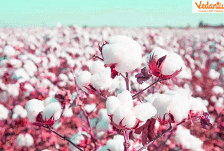
Cotton
Tea (Camellia Sinensis)
Tea is a plant that grows in a shady region. The growth of new leaves is aided by high humidity, heavy dew, and morning fog. Black tea, green tea, oolong tea, and brick tea are the four varieties of tea. India is the fourth largest exporter of tea after Kenya, China, and Sri Lanka. India produces the most tea and has the world's largest tea-growing region. India produces 28.3 % of the world's tea. In India, the tea-producing states are Assam, West Bengal, Tamil Nadu, and Kerala.
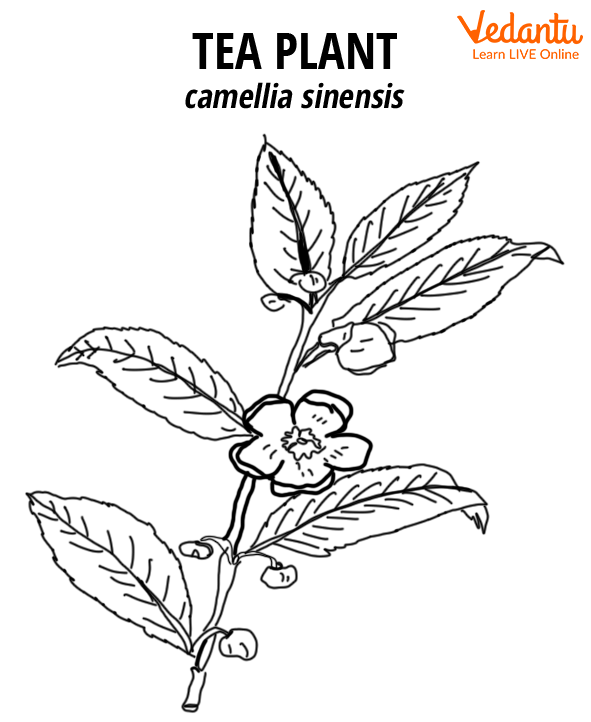
Tea Plant
Sugarcane (Saccharum officinarum)
Sugarcane is a plant that originated in India. Sugarcane is a member of the grass family of the Poaceae family that is mostly grown for all of its juice, which is then used to make sugar. Bagasse is sugarcane fibre that has been crushed. It is used in the production of papers and fiberboards. As a commercial crop, it occupies a key place. Brazil is the world's top sugarcane grower, followed by India. In India's sugarcane-producing zones, Punjab, and Haryana are in the Northern Belt, whereas Maharashtra and Karnataka are in the Southern Belt.
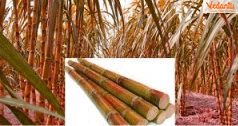
Sugarcane Plants
Tobacco (Nicotiana tabacum)
Tobacco is a highly valuable cash crop for both local and global producers. Its applications go beyond smoking. Tobacco plants have a chemical called nicotine that is used in smoking. Cigarettes, bidis, kreteks, cigars, and pipe tobacco are all smoked products.
Bidis are cigarette-like goods made of tobacco and wrapped in a leaf and tied with a string that is imported from India.
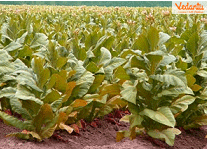
Tobacco plants
Rice (Oryza sativa)
Rice is a major grain and cash crop that is grown in tropical and temperate climates around the planet. When compared to almost the same number of other dietary grains, rice can feed the population. Punjab and Haryana are the two most important producers in India. China is the world's top producer, followed by India.
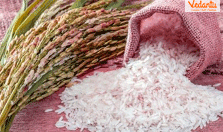
Rice
Potatoes (Solanum tuberosum)
Potatoes are also cash crops because, in the deficiencies of cereals and grains, they are utilised to get nutrients. Potatoes, apart from vitamins A and D, contain practically all the critical nutrients. They are widely consumed because of their cheap prices and high production.
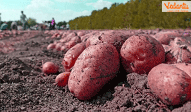
Potatoes
Conclusion
Cash crops are grown in large quantities and sold in the market to get cash. These are used to increase the economy of any country because money is important to raise the standard of any developing country. The above articles provide examples of cash crops that are mostly used in markets. The topic is helpful to understand the concept of cash crops. This topic is essential for the preparation of NEET exam.
Factors Affecting Crop Production
Crop production is influenced by internal (genetic) and external factors, including climate, soil, organisms, and socio-economic conditions.
Internal or Genetic Factors
Seed quality affects germination and yield.
Growth rate determines plant development speed.
Resistance helps tolerate pests and diseases.
External Factors
Climate
Edaphic
Bioyic
Socio-economic
Climatic
Temperature affects crop growth and development.
Rainfall is essential for water supply.
Humidity influences disease and transpiration.
Edaphic
Soil texture determines water retention.
Soil pH influences nutrient availability.
Organic matter improves soil fertility.
Biotic
Pests damage crops and reduce yield.
Diseases negatively affect plant health.
Weeds compete with crops for nutrients.
Socio-economic
Technology improves farming efficiency.
Market demand influences crop selection.
Labour availability affects farming operations.
Essential Study Materials for NEET UG Success
FAQs on Cash Crops - NEET Important Topic
1. Why are some crops included in cash crops?
Cash crops are now cultivated and marketed all over the universe. Such crops are frequently planted as a source of food for mankind or farm animals. Clothing is made from certain cash crops, such as cotton. Plenty of others, such as opium, coca, and marijuana crops, have been used to make pharmaceutical or pleasure medications. Depending on the environment, different cash crop varieties are cultivated in various parts of the world, and only a few locations yield no cash crops in any way. Cultivating something in regions like the Tundra is difficult, which restricts cash crop yields.
2. Why is jute known as golden fibres?
The jute is a cash crop grown in some areas to sell out. The jute fibres have a yellow colour and have a strong financial value, so they are known as golden fibres. Jute fibres are used in textile industries. The jute fibres are used to make some items like carrying bags, and ropes that are sold in the market. People have been using these items since ancient times and have a significant value. The items that are formed from jute fibres are natural and attracted most ancient people.
3. What are Kharif and Rabi crops?
Depending on their growing seasons, crops are grouped into Kharif and rabi crops. Crops cultivated during the rainy season, from June to September, are known as Kharif crops. These are summertime crops. October and November are when they harvest. Since they grow during the rainy season, they are also known as monsoon crops. Rice, maize, jawar, bajra, cotton, sorghum, soybeans, and other crops are Kharif crops.
After the harvest of Kharif crops, the winter season is when Rabi crops, also known as winter crops, are grown. These crops were harvested in March and April after being harvested in October. Wheat, gramme, mustard, barley, and other crops are rabi crops.
4. What is a cash crop in Class 12?
A cash crop is a crop grown mainly for sale in markets rather than for direct consumption by the farmer, such as cotton, sugarcane, and tea.
5. What are the cash crops for UPSC?
The major cash crops for UPSC exams include cotton, sugarcane, tea, coffee, tobacco, oilseeds, rubber, and spices.
6. What are the top 5 cash crops?
The top five cash crops globally are sugarcane, cotton, coffee, tea, and wheat.
7. What are 3 cash crops in India?
Three major cash crops in India are cotton, sugarcane, and tea.
8. What are the examples of fibre crops in India?
Examples of fibre crops in India include cotton, jute, flax, and hemp, which are used for making textiles and ropes.
9. Is coffee a cash crop?
Yes, coffee is a cash crop because it is grown primarily for commercial sale and export rather than for local subsistence.
10. Which is the richest crop?
Saffron is considered the richest crop due to its high market value and labor-intensive harvesting process.
























